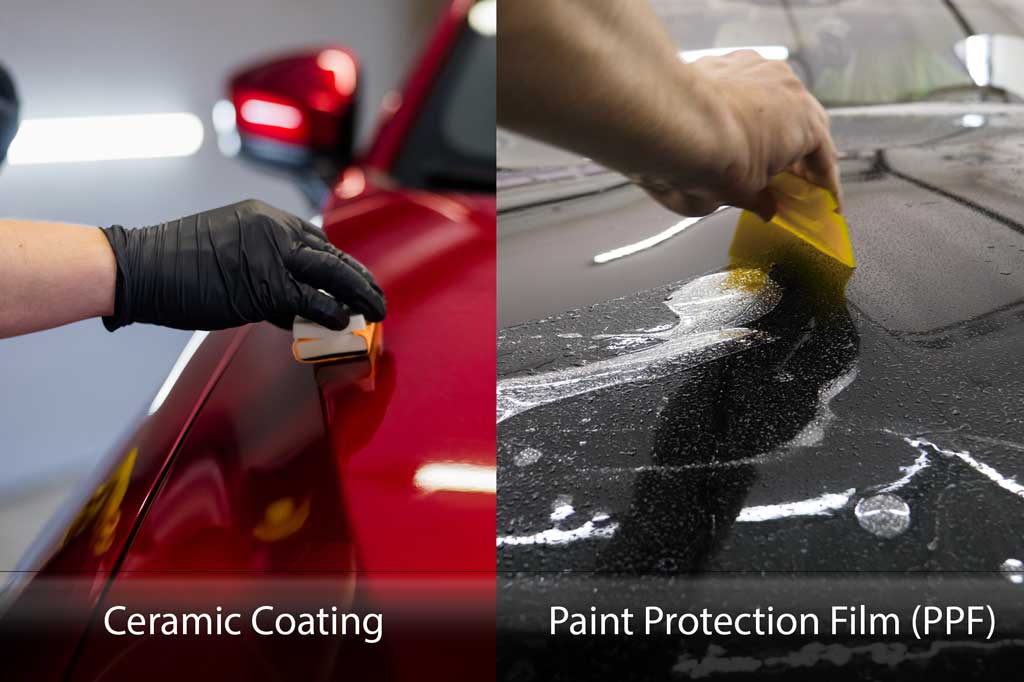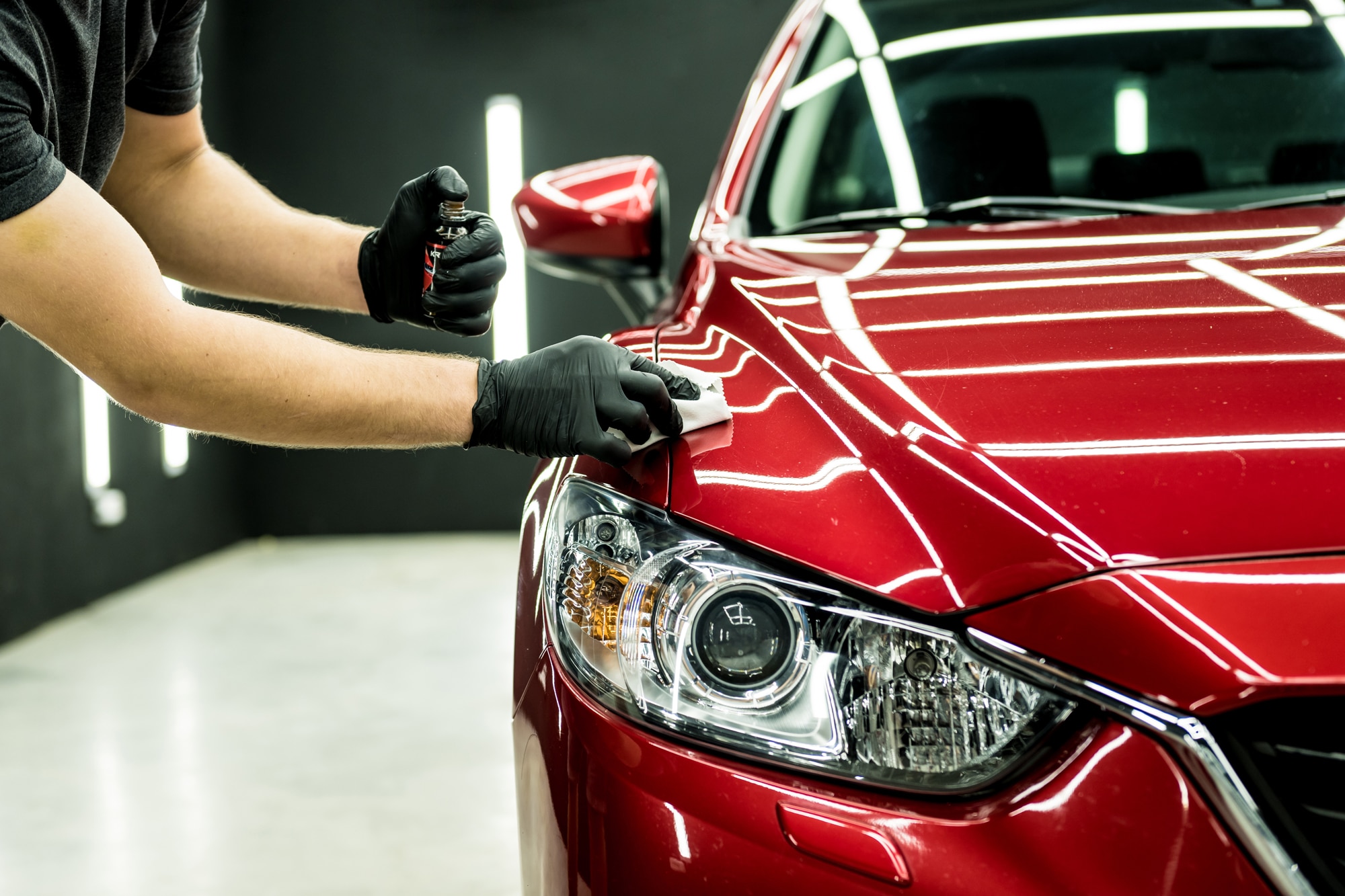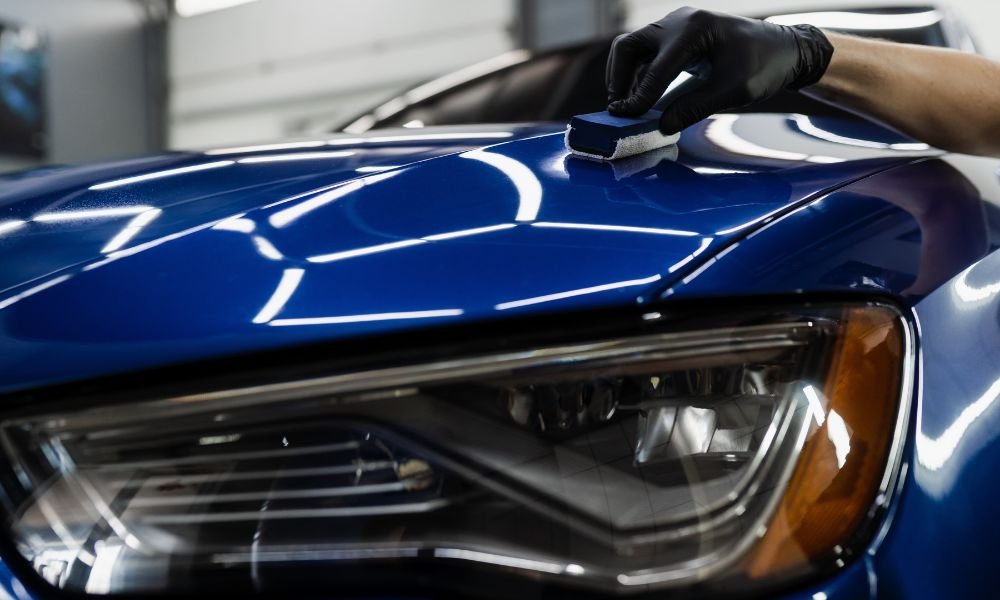The Duty of Ceramic Finishing in Securing Your Vehicle's Paint From Environmental Damage
Ceramic layer has become an advanced option for car owners seeking to maintain the stability of their car's outside. By establishing a durable chemical bond with the paint, this sophisticated technology uses a formidable obstacle against numerous environmental hazards, such as UV rays, acid rain, and impurities. Nevertheless, understanding the detailed benefits and the ins and outs of the application process is necessary for maximizing its efficiency. As we check out the subtleties of ceramic finishing, it comes to be apparent that the option to apply this protective procedure can considerably affect your vehicle's durability and visual.
What Is Ceramic Coating?
Ceramic covering is a sophisticated fluid polymer put on the external surface areas of a lorry, designed to provide a durable layer of protection for the paint. This ingenious option develops a chemical bond with the automobile's manufacturing facility paint, developing a resistant and hydrophobic guard. The layer contains nanoparticles that complete the tiny blemishes in the paint, causing a smooth surface area that improves radiate and gloss.
Normally, ceramic finishes are offered in different formulas, permitting different degrees of defense and long life. While some items can last for numerous months, others supply security for a number of years, depending on the density of the application and ecological aspects. The application process requires thorough prep work, including washing, decontaminating, and brightening the automobile's surface to make certain optimum bond of the covering.

Advantages of Ceramic Finishing
One of the key advantages of applying a ceramic coating is the remarkable defense it uses to automotive paint. This innovative finishing forms a long lasting layer that shields the automobile's surface from a selection of environmental threats, including UV rays, acid rainfall, bird droppings, and tree sap. By offering this durable defense, ceramic finishes considerably lower the risk of fading and etching, maintaining the vehicle's visual appeal gradually.
Along with security, ceramic layers are renowned for their hydrophobic residential properties, which fend off water and dust, making it easier to preserve a clean lorry. This self-cleaning effect minimizes the frequency of washing, conserving both time and sources. Furthermore, ceramic finishes boost the depth of the paint's gloss, leading to a lively and refined appearance that elevates the general appearance of the lorry.
Another noteworthy benefit is the durability of ceramic finishes. Unlike typical waxes or sealers that require frequent reapplication, ceramic coverings can last numerous years, using an affordable service for cars and truck proprietors looking for long-lasting security. Generally, buying ceramic finish causes boosted longevity, lowered upkeep, and continual visual charm for vehicle paint.
Exactly How Ceramic Finishing Works
A ceramic covering operates through a chemical bonding procedure that develops a safety layer on the car's paint surface. This innovative solution makes use of innovative nanotechnology, where tiny bits of silica are suspended in a liquid form - ceramic coating. Upon application, these fragments bond with the manufacturing facility paint, developing a hydrophobic and durable layer that boosts the automobile's surface
The look at these guys main part of ceramic layers, silicon dioxide (SiO2), adds to the coating's toughness and durability. When treated, the layer changes into a tough, glass-like surface that guards the paint from ecological contaminants such as dust, UV rays, bird droppings, and tree sap. This molecular bond leads to a surface area that is not just resistant to scrapes but additionally simpler to clean, as dust and grime are much less likely to stick.
Additionally, the hydrophobic properties of ceramic layers trigger water to grain and slide off, decreasing the opportunities of water areas and mineral down payments. This safety barrier properly prolongs the life of the paint and keeps the vehicle's visual appeal, using car owners a lasting remedy for paint protection.
Application Process of Ceramic Layer
When thinking about the application of ceramic coating, preparation is essential to attaining optimum results. The moved here very first step includes extensively cleaning the automobile to eliminate dirt, gunk, and contaminants from the surface. This typically includes a decontamination process utilizing clay bars or chemical cleansers to ensure the paint is flawlessly clean. Any kind of flaws or scrapes should be attended to at this stage, as the layer will bond with the surface below.

Ceramic finishing is then used in small areas, usually using an applicator pad. The automobile ought to be left to heal in a controlled setting to enable the coating to totally bond with the paint.
Long-Term Maintenance and Treatment
Achieving an effective ceramic covering application establishes the foundation for lasting protection, but appropriate upkeep is crucial to maintaining its benefits. Normal washing is crucial; using a pH-neutral auto shampoo will certainly help preserve the coating's stability without creating damages. Stay clear of automated vehicle cleans that usage abrasive products, as they can jeopardize the layer's surface.

Moreover, using a ceramic coating maintenance spray can improve the existing layer, supplying an added increase in protection and shine. It's recommended to do this every 3 to 6 months, relying on ecological direct exposure.
Lastly, vehicle parking in shaded locations or utilizing auto covers can protect against prolonged exposure to harmful UV rays and environmental contaminants, even more extending the life of your ceramic finishing. By adhering to these maintenance practices, you can ensure your vehicle's finish remains protected and aesthetically appealing for years ahead.
Verdict
In summary, ceramic layer acts as a crucial safety measure for automotive paint, properly shielding lorries from an array of ecological dangers. Its capability to create a robust hydrophobic obstacle not just enhances aesthetic allure however likewise considerably decreases the regularity and strength of maintenance required. The durable nature of this innovative polymer highlights its value in maintaining automobile integrity and look, eventually adding to an extra long lasting and visually enticing vehicle finish.
Ceramic layer is a sophisticated liquid polymer used to the outside surface areas of an automobile, designed to give a resilient layer of protection for the paint. Ceramic finishes enhance the deepness of the paint's gloss, resulting in a dynamic and sleek appearance that boosts the overall appearance of the car.
A ceramic layer operates via a chemical bonding process that produces a protective layer on the automobile's paint surface area.The primary part of ceramic coverings, silicon dioxide (SiO2), adds to the layer's strength and strength.In recap, ceramic finishing offers as a vital safety action for automobile paint, successfully shielding cars from an array of environmental risks.